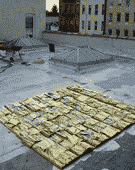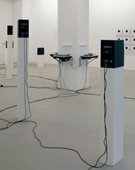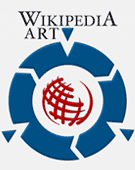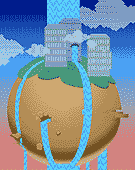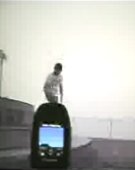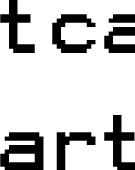Gunter Puller poses a question that is critical to art and essential to environmental conservation. “What is protection worth?” Entire civilizations have risen and fallen seeking this answer. Currently, two camps of environmentalists are debating “what protection is worth” by asking, does good stewardship involve preservation of an ideal state or augmentation of dynamic evolution? Puller channels this debate into the field of art. Because he is conscious of the high cost of conserving artworks, he poses a radical proposition - applying environmental stewardship to art may involve acquiescing to change rather than fortifying against it. His proposition challenges art’s markets, criticism, and aesthetics, as well as conventional museum protocols.
In “At the End of the Rainbow” Puller subjects obsolete Yellow Page books to three possible treatments using three different formats. One, a photograph depicts a cover of the book immobilized and immortalized within a cast resin block. Two, a ...
Full Description
Gunter Puller poses a question that is critical to art and essential to environmental conservation. “What is protection worth?” Entire civilizations have risen and fallen seeking this answer. Currently, two camps of environmentalists are debating “what protection is worth” by asking, does good stewardship involve preservation of an ideal state or augmentation of dynamic evolution? Puller channels this debate into the field of art. Because he is conscious of the high cost of conserving artworks, he poses a radical proposition - applying environmental stewardship to art may involve acquiescing to change rather than fortifying against it. His proposition challenges art’s markets, criticism, and aesthetics, as well as conventional museum protocols.
In “At the End of the Rainbow” Puller subjects obsolete Yellow Page books to three possible treatments using three different formats. One, a photograph depicts a cover of the book immobilized and immortalized within a cast resin block. Two, a video presents an art performance that deconstructs the book as a willful human act; it consists of 500 quick cuts of the artist tearing one page after another out of its binding and tossing it away. This studio-processed decay is faster than natural decay, made even faster by time-lapse photography. Three, a sculpture engages slow biological degradation that occurs in the absence of human intervention; it consists of thirty books laid out in a neat grid on the roof of the Nurture Art building. In this instance Puller exchanges shelter for exposure by welcoming the deteriorating effects of wind, rain, and sun. Although trees and weeds are scant in the commercial Brooklyn neighborhood where the gallery is located, Puller anticipates that over time, the books will degrade, giving rise to a fertile soil habitat where random seeds, airborne with urban soot, will settle and sprout. Thus, preservation, demolition, and biological transformation are juxtaposed to summarize a dilemma that was voiced three centuries ago by the renowned Enlightenment philosopher, Jean-Jacques Rousseau.
Linda Weintraub, Curator
Work metadata
- Year Created: 2009
- Submitted to ArtBase: Tuesday Feb 2nd, 2010
- Original Url: http://www.puller-rainbow-yellow.at.tt/
- Permalink: http://www.puller-rainbow-yellow.at.tt/
-
Work Credits:
- Günter Puller, creator
Take full advantage of the ArtBase by Becoming a Member
